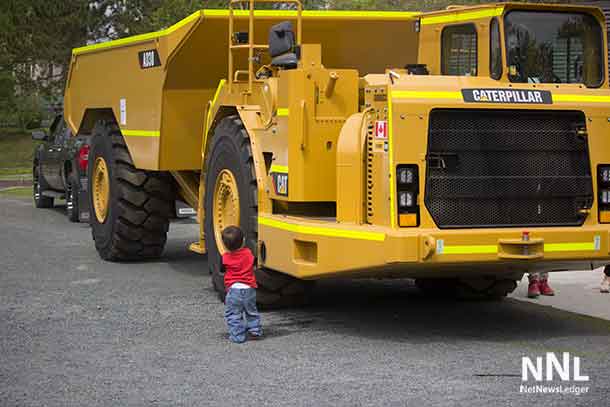
THUNDER BAY – BUSINESS – The mining sector in British Columbia is seeing lower commodity prices. Those lower prices are again impacting the profitability of the BC mining industry in 2014. According to the annual PwC BC Mining Industry Survey for 2014, the continued drop in the price of key metals and minerals, particularly metallurgical coal and copper, led to reduced revenues and margins.
The PwC survey found aggregate gross mining revenues fell to $8.2 billion in 2014, compared to $8.5 billion in 2013. Net income before taxes came in at $288 million, down considerably from $1.4 billion in 2013, amid a drop in prices for key metals produced in the province, particularly coal. Spending also fell as companies continued to hunker down and weather the ongoing market volatility. Capital expenditures, for example, fell to $1.5 billion, compared to $1.8 billion in 2013.
“In 2014 we saw investment in BC’s mining industry remain depressed as prices for its key commodities, metallurgical coal and copper, remained soft,” said Mark Platt, Partner and Leader of PwC’s BC mining practice. “Producers and developers continue to take measures to contain costs but at least producers felt some relief from the impact of the significant weakening of the Canadian dollar compared to the US dollar.”
Commodity pricing
Supply and demand were the key factors impacting commodity prices in 2014. However, prices were also influenced by the strengthening US dollar and concerns about an economic slowdown in China, one of the world’s largest consumers copper, coal, and zinc. While most commodity prices are still well above their levels during 2008 and 2009 global recession, they remain down considerably from record or near-record highs set in 2011.
The drop in metallurgical coal prices had the biggest impact on mining activity in the province in 2014 and a handful of coal mines were put on care and maintenance during the year due to lower prices. Metallurgical coal has fallen below US$100 per tonne as of the spring of 2015, down from record US$330 per tonne in 2011, due to oversupply of this steelmaking ingredient in the global market and a slowdown in China’s economic growth.
Copper was performing well for most of 2014, but then fell below US$3.00/lb towards the end of the year, amid concerns of oversupply. That compares to early 2011, when copper traded at a record of just over US$4.60/lb.
Looking ahead
Overall 2015 looks to be another challenging year for metal and coal prices. While some metals will do better than others, miners will continue to manage their costs to reflect the ongoing downturn in the cycle, and are expected to treat any price recovery with great caution.
The impact of several mines being put into care and maintenance during 2013 and 2014 will also be seen in full in the 2015 numbers. While the position of these mines isn’t good news for the economic growth in BC’s mining industry, other mines do continue to move toward production. What’s more, in 2014 exploration and development expenditures from survey respondents increased to $234 million, which is an increase from $185 million in 2013, but below the $305 million spent in 2012.
Many miners are also holding up relatively well, despite lower prices for their commodities. PwC’s latest Junior Mine Report, which looks at the top 100 mining companies by market capitalization on the TSX Venture Exchange, showed the environment is tough for juniors today, but their grit and determination could soon pay off. According to the 2014 Junior Mine report, the Top 100 raised a total of $685 million through equity financings in the 12-month period ended June 30, 2014, which was down from $795 million a year earlier.
“BC’s mining sector is not showing any early signs of improvement in 2015,” said Platt. “But investment in the mining industry must continue, despite today’s challenging conditions. Miners need to keep exploring if they are to find the discoveries today that will be developed into the mines of tomorrow. This is the only way to ensure the industry remains competitive in the long term.”




